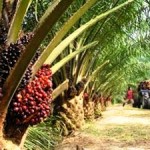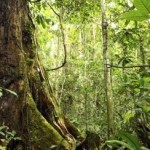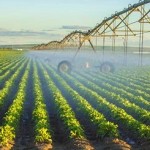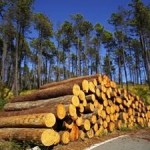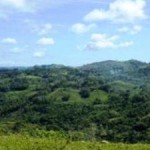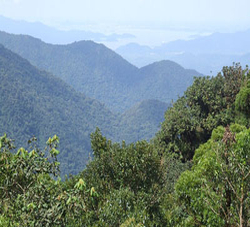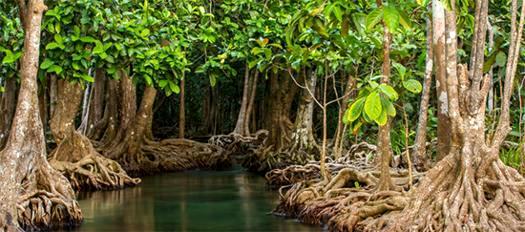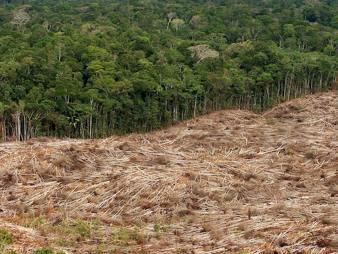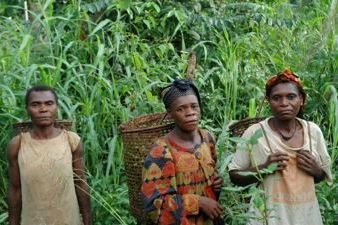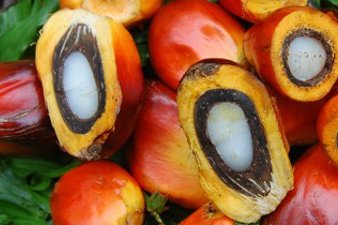
If you’ve gone grocery shopping lately, you’ve probably bought palm oil.
Found in thousands of products, from peanut butter and packaged bread to shampoo and shaving cream, palm oil is a booming multibillion-dollar industry. While it isn’t always clearly labelled in supermarket staples, the unintended consequences of producing this ubiquitous ingredient have been widely publicized.
The clearing of tropical forests to plant oil palm trees releases massive amounts of carbon dioxide, a greenhouse gas fuelling climate change. Converting diverse forest ecosystems to these single-crop “monocultures” degrades or destroys wildlife habitat. Oil palm plantations also have been associated with dangerous and abusive conditions for labourers.
Significantly eroded water quality now joins the list of risks associated with oil palm cultivation, according to new research co-authored by researchers from Stanford University and the University of Minnesota, who warn of threats to freshwater streams that millions of people depend on for drinking water, food and livelihoods.
The new study in the Journal of Geophysical Research: Biogeosciences contains surprising findings about the intensity and persistence of these impacts, even in areas fully forested with mature oil palm trees.
Land clearing, plantation management (including fertilizer and pesticide application) and processing of oil palm fruits to make crude palm oil can all send sediment, nutrients and other harmful substances into streams that run through plantations. Vegetation removal along stream banks destroys plant life that stream organisms depend on for sustenance and shade.
“Although we previously documented carbon emissions from land use conversion to oil palm, we were stunned by how these oil palm plantations profoundly alter freshwater ecosystems for decades,” said study co-author and team leader Lisa M. Curran, a professor of ecological anthropology at Stanford and a senior fellow at the Stanford Woods Institute for the Environment.
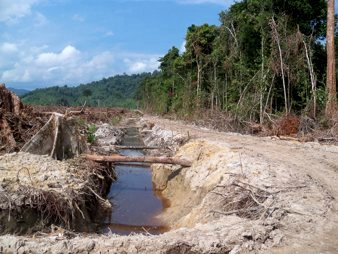
Palm Oil Epicentre
Indonesia produces almost half of the world’s palm oil. Home to the world’s third-largest tropical forest, the country is also one of the principal emitters of greenhouse gases, due to the rapid conversion of carbon-rich forests and peatlands to other uses.
From 2000 to 2013, Indonesia’s land used for oil palm cultivation more than tripled. About 35 percent of Indonesian Borneo’s unprotected lowlands may be cleared for oil palm in coming years, according to previous research by Curran and the study’s lead author, Kimberly Carlson, a former Stanford graduate student who is now a postdoctoral scholar at the University of Minnesota’s Institute on the Environment.
Curran, Carlson and their colleagues focused on small streams flowing through oil palm plantations, smallholder agriculture and forests in and around Gunung Palung National Park, a federally protected area that Curran was instrumental in establishing in 1990. They found that water temperatures in streams draining recently cleared plantations were almost 4 degrees Celsius (more than 7 degrees Fahrenheit) warmer than forest streams. Sediment concentrations were up to 550 times greater. They also recorded a spike in stream metabolism – the rate at which a stream consumes oxygen and an important measure of a stream’s health – during a drought.
Possible Solutions
The impact of these land use changes on fisheries, coastal zones and coral reefs – potentially many miles downstream – remains unclear because this study is one of the first to examine the oil palm’s effects on freshwater ecosystems.
“Local communities are deeply concerned about their freshwater sources. Yet the long-term impact of oil palm plantations on freshwater streams has been completely overlooked until now,” Curran said. “We hope this work will highlight these issues and bring a voice to rural communities’ concerns that directly affect their livelihoods.”

